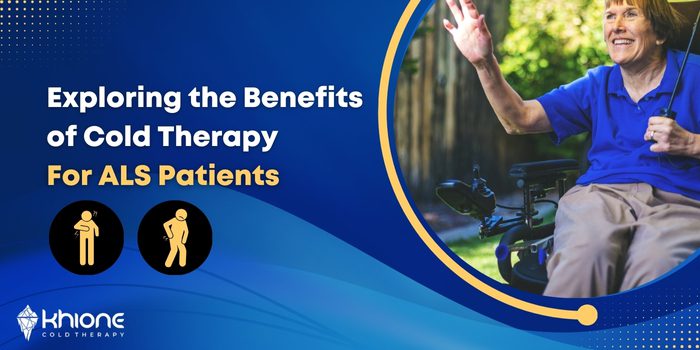Introduction
Amyotrophic Lateral Sclerosis (ALS), also known as Lou Gehrig’s disease, is a progressive neurodegenerative disorder that affects nerve cells in the brain and spinal cord. This debilitating condition leads to muscle weakness, paralysis, and ultimately, respiratory failure. However, emerging therapies and lifestyle interventions offer hope in managing ALS symptoms. Among these is cold therapy, including cold exposure and ice bathing, which has been gaining attention for its potential benefits in neurodegenerative diseases.
Understanding Cold Therapy
Cold therapy encompasses various techniques like cold exposure, ice baths, and cryotherapy. It involves exposing the body to extremely cold temperatures for short periods. This exposure triggers a physiological response that includes improved circulation and reduced inflammation. For individuals with neurological conditions, these effects could be particularly beneficial.
Cold Therapy in Neurodegenerative Diseases
Research into cold therapy for neurodegenerative diseases is still in its infancy. However, the anti-inflammatory and neuroprotective effects observed in some studies are promising. These effects might stem from the body’s response to cold, which includes the release of anti-inflammatory cytokines and reduction in oxidative stress.
Potential Benefits for ALS Patients
For ALS patients, the potential benefits of cold therapy are particularly intriguing. By reducing inflammation, which plays a significant role in ALS progression, cold therapy might offer a way to slow down the disease’s advancement. Additionally, it might aid in reducing muscle spasticity and improving the overall quality of life for ALS patients. However, it’s important to note that these benefits are largely speculative at this point, with more research needed to understand the full impact.
Risks and Considerations
While cold therapy might offer benefits, it’s not without risks, especially for ALS patients. The stress of cold exposure can pose cardiovascular risks, and in some cases, might exacerbate certain symptoms. It’s crucial for ALS patients to consult with their healthcare providers before starting any form of cold therapy.
Patient Testimonials and Experiences
Anecdotal evidence and personal stories from ALS patients who have tried cold therapy can offer insights into its potential effects. Some patients report improved mood and mobility, while others note no significant changes. These personal experiences, while not scientific evidence, can provide valuable perspectives.
Integrating Cold Therapy into ALS Care
For ALS patients interested in trying cold therapy, it’s important to approach it cautiously. Starting slowly, monitoring the body’s responses, and ensuring a safe environment are key. Additionally, cold therapy should be seen as a complementary approach, used in conjunction with other ALS treatments and care strategies.
Conclusion
Cold therapy presents an intriguing possibility for ALS patients, offering potential benefits like reduced inflammation and improved quality of life. However, its effectiveness and safety need further research. As with any new therapy, it’s essential for patients to discuss with their healthcare providers and consider all risks and benefits.





